Remember the Amazon airship?
Of course, it was a fake. But it may not be far from the truth. Amazon really wants to build such a colossus. A huge balloon from which drones scatter in all directions, like bees from a hive. The company is closer to the implementation of such a project than you might think. And she is not alone.
In the comments in the post about the airships, Milfgard started a discussion about whether such a colossus could deliver goods, or whether it was too unprofitable, difficult and dangerous task.
So, Amazon (and many others, including the Chinese government and Walmart) think that it will be able to. Just not quite the way trucks or container ships are working now. For example, such a giant should come down to earth only in an emergency, not more than once every six months. And he can hang in the air at the height of the stratosphere.
Warehouse over the city
82 years ago, the crash of the Hindenburg marked the end of the era of large balloons that dominated the air at the beginning of the 20th century. Seeing what danger airships can pose to the public and their passengers, authorities and manufacturers have finally relied on airplanes. In 1938, the production of zeppelins was discontinued.
But in the near future (according to the plan - literally 10-20 years) they can return. And the air of megacities will again slowly plow huge flying ships. Not less than Hindenburg.
They will not be available for passenger traffic, you are unlikely to be able to climb into them and fly over the city. But, thanks to the latest technologies, they can become a profitable and environmentally friendly way to deliver goods. Especially in large cities like New York, where it is becoming increasingly difficult to quickly move from point to point, and, conversely, in places with undeveloped infrastructure, where it is not so easy to get to in the usual way.
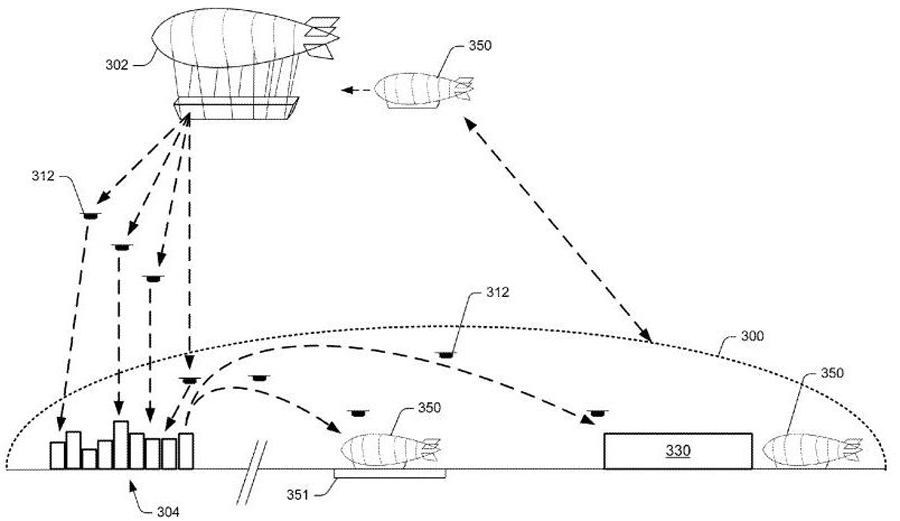 Amazon Balloon Patent
Amazon Balloon PatentIn 2016, Amazon patented a project for a flying warehouse - airborne fulfillment center (AFC). A huge airship circulating slowly over the city at an altitude of up to 14,000 meters. Filled with helium, much safer than the hydrogen that killed the Hindenburg.
The flying warehouse, according to the plan, will store the most popular and not very heavy goods. When a customer makes a purchase, an autonomous drone flies from the sky and delivers it to the desired address. Amazon says it will require a minimum of energy because most of the way the drone will simply plan down. Unlike any land-based warehouse, it does not have to rise from the ground with cargo. And considering that maintaining a balloon in the air also requires very little energy, such a system will soon begin to pay for itself.
Amazon's patent also offers several other uses for such a zeppelin warehouse. For example, during a soccer match, shoppers may want to purchase drinks, food, or merchandise. An airship with the necessary goods will sail in advance and park over the field. Your orders will be processed right during the game, and drones will deliver them to your hands. And on such a colossus there will be plenty of advertising space, which will be visible throughout the city. If suddenly a new popular product has appeared (a new iPhone or, say, an Echo column) - show it on the display. The buyer from the earth gives the impression that every drone flying out of the airship carries it, and he misses something.
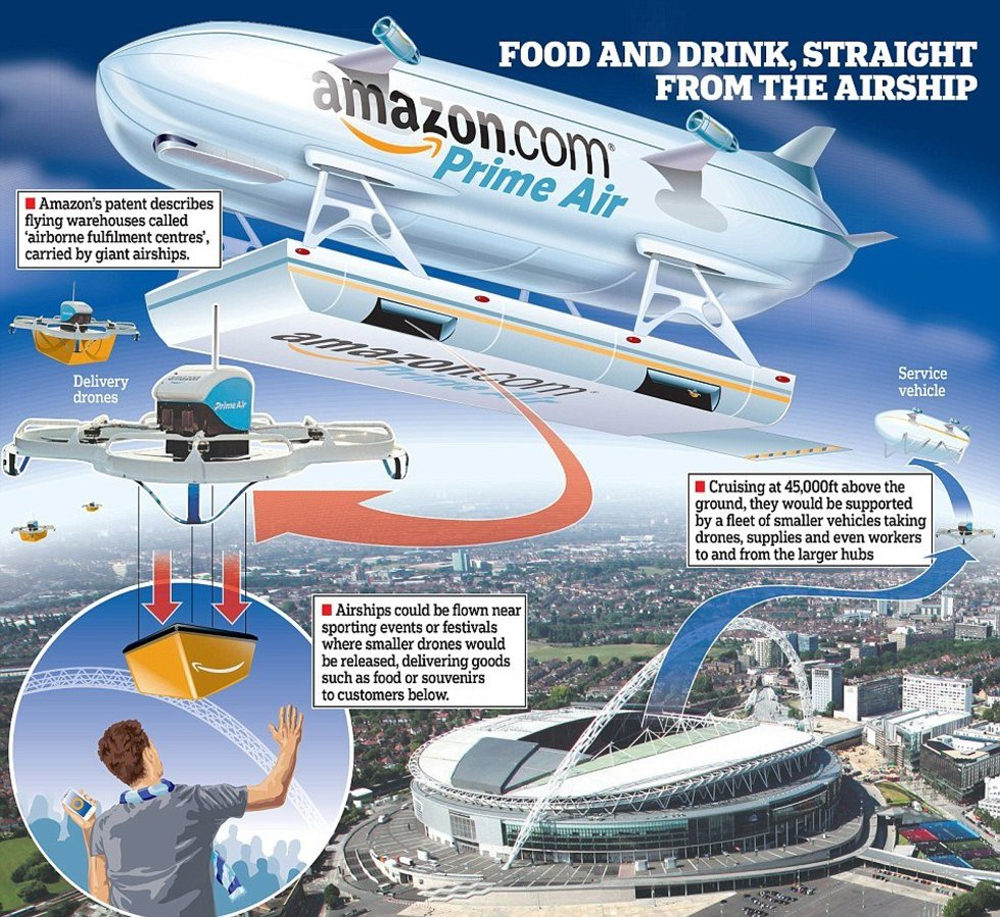
According to the patent, the balloon will be very large - hundreds of meters in length. With such dimensions, it is simply more profitable. He will be able to carry several hundred tons of goods. Its size and carrying capacity will be higher than that of the largest aircraft in history - the Soviet transport An-225 Mriya , which can carry up to 209 tons.
But the main advantage of the entire project for Amazon users will be the speed of delivery. The company is already spending tens of billions of dollars a year to reduce it to two days across the United States. This is one of its main competitive advantages. And if the warehouse flies a few kilometers above the city, delivery to any point in the metropolis by a drone is reduced to "several minutes."
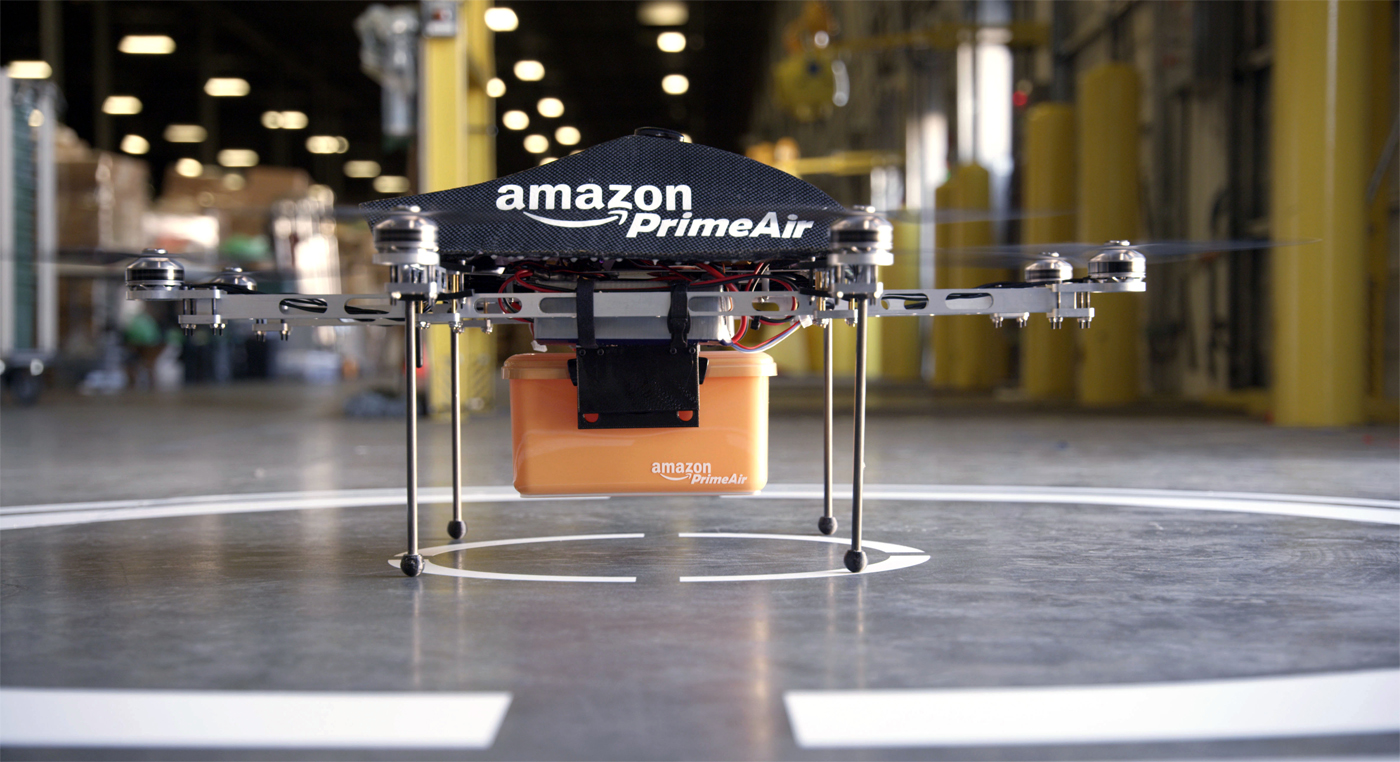
It is assumed that such a giant will always remain in the air so as not to waste energy. The replenishment of fuel and supplies on board will be carried out by smaller "shuttles". By similar airships, only an order of magnitude smaller, and with the ability to sit up and rise regularly.
A later patent explains that the company's drones will also partially recharge in the air, from the energy generated by the car’s air turbine. And so, God forbid, the parcel is not damaged during the landing, they plan to create a rather unusual thing, a special casing that would accept the parcel. He descends from the drone when he arrives at you under the door and unfolds in the style of an accordion. Then the package gently descends, pushing inside from its walls.
Walmart is not far behind its main competitor in the USA. In 2017, she received a patent for a “gas-filled air transport system for launching unmanned aerial systems for food delivery.” In fact, the same thing, only in profile. A flying warehouse of goods, with a large gas cylinder, a rigid frame, a power plant and parking lots for drones that receive goods at extradition and go down with them.
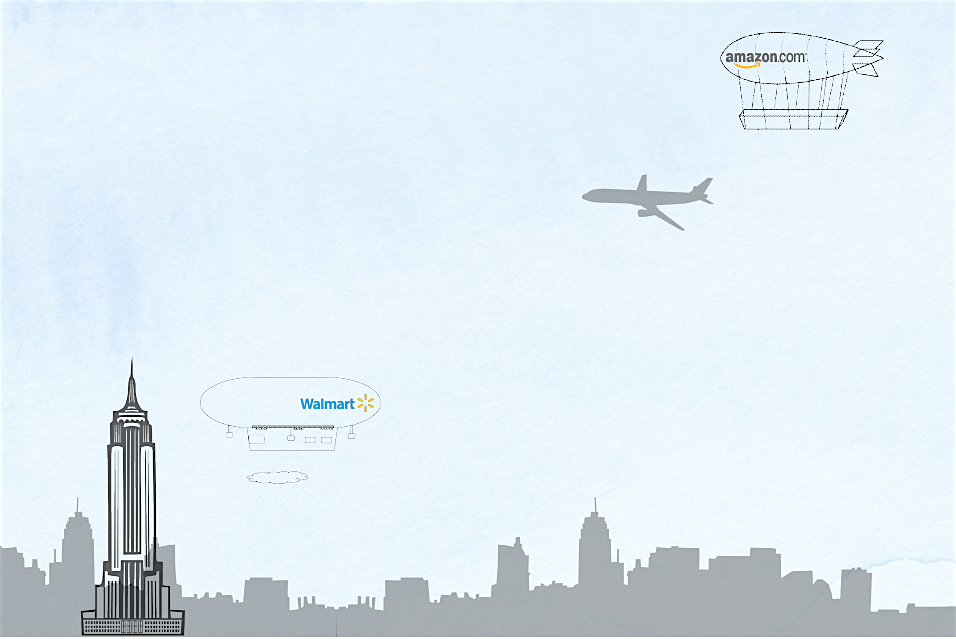
Only if Amazon’s ambitions are striving into the stratosphere (literally) does Walmart want its airship to fly much lower, roughly at the level of the spire of the Eiffel Tower. The size of the balloon is also more modest: like five or six trucks standing in a row. In general, the company's project looks more realistic, but on the other hand, Amazon already has a ready - made dron delivery system in the form of Prime Air. All that remained for her was to build an airship from which they could be launched. The technology, which was implemented in the 1850s, is unlikely to become something incomprehensible to Bezos.
Flying whales
Not only the main American sales giants are thinking about the potential revival of airships. For example, a Chinese state-owned company invested in a project of the French company Flying Whales. In total, the project from France and China has already gone over $ 300 million, despite the fact that in fact it still has only an idea and a plan.
Zeppelins will be assembled in Central China, in the Kinmen area, as well as in France and Morocco. The first test "flying whale" with a length of 150 meters is planned to go swimming according to plan in 2021. He, too, will never land, in calm weather, staying in the air without fuel costs. As a result, dozens of giant airships, each more than twice as long as the Boeing 747, will run in China in areas with poor infrastructure. Sebastian Bougon, CEO of Flying Whales, expects to build more than 150 cars by 2032.
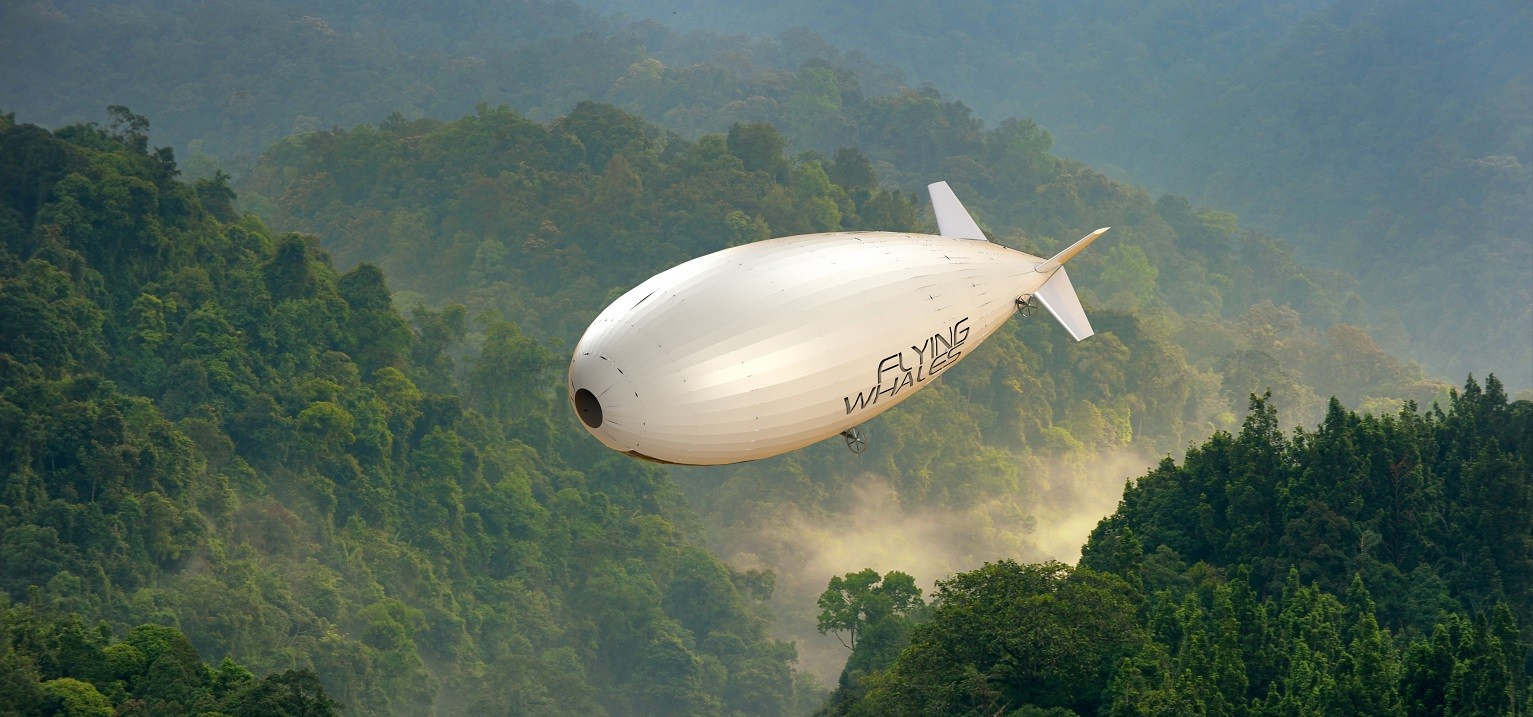
The project appeared in 2012 in the Forestry Administration of France. In the south and east, the country has areas rich in (by European standards) forest resources. But their development is very difficult due to the lack of the necessary infrastructure. If you lay thousands of kilometers of roads and build airfields to transport timber, the project will pay off for a very long time. Therefore, the French asked themselves: is there a cheaper and easier way?
The airship could land at the felling site, or not land at all, but use a lift. He does not need roads, he can transport goods of enormous weight at a relatively low cost. And even if something goes wrong and a catastrophe of the scale of the Hindenburg happens - in the woods only crows and squirrels will suffer.
Flying Whales introduced the French Government to the LCA60T project - a helium-filled airship powered by seven electric motors that meets all specifications. As the name implies, it is designed to carry 60 tons of cargo. For comparison, a large truck usually carries up to 22 tons.
 It is hoped that the transport of the forest will be slightly different.
It is hoped that the transport of the forest will be slightly different.Balloons are planned to be used not only to expand the logging area. The design provides opportunities for transporting electric poles, wind turbines and even modular buildings. Quickly develop any territory, build infrastructure where there was no trace of it before.
Chinese GAIGA has already invested about $ 200 million in the project, having received a quarter share in the company. In total, Flying Whales are valued at more than $ 1 billion, although the company does not even have a working prototype.
Why airships
As conceived by the Chinese, the device should help the country solve several urgent problems.
Firstly, the transportation of large loads from difficult regions. For example, from the oil and gas fields of the Arctic (for this, the LMH-1 hybrid airships have also been ordered from Lockheed Martin ). The Arctic opens up, due to global warming, more and more opportunities appear there, and those who can exploit them first will have a big advantage.
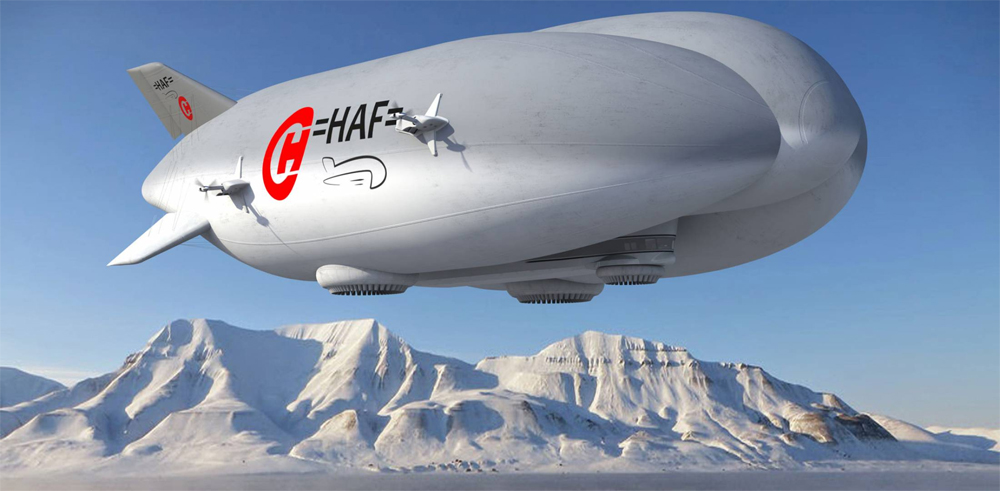
Flying Whales airships can travel at speeds of up to 100 km / h and at a cost of less than 5% of the cost of operating cargo helicopters. The length of the cargo compartment is as much as 75 meters, half the zeppelin itself. You can transport anything in a balloon, not only oil and gas itself, but also spare parts, and even team members. They can become an important link in complex supply chains.
Secondly, airships can help in the developing countries of Africa and Asia, to which China also has its own claims. In many places, there are no good roads and (due to a corrupt government) is not even foreseen. And here - you can take everything into your own hands. Transport generators, solar panels. Quickly ship goods to undeveloped areas. For the same task, airship trucks can come in handy in Russia. With them you can fly on any off-road, and deliver a large load without spending a lot of money on it.
Thirdly, environmental issues. Airplanes and helicopters are very unpleasant in terms of CO2 emissions. In 2010, the International Air Transport Association called for the abandonment of heavy cargo aircraft. The Boeing 747 uses 7,840 kg of aviation fuel for takeoff, flight and landing over 250 km. And 10 kg for each subsequent kilometer in ideal conditions. A short trip from Moscow to St. Petersburg produces about 45 tons of CO2. The same atmospheric emissions on such a journey would have produced 350-400 cars.
Airships emit 80-90% less harmful gases into the atmosphere. And due to the low altitude (in the case of Flying Wales and the Walmart project) they do not leave inversion traces that contribute to the greenhouse effect. The Chinese freight market is one of the largest in the world, and even if a small part of it were transferred to airships, the rate of pollution could be significantly reduced.
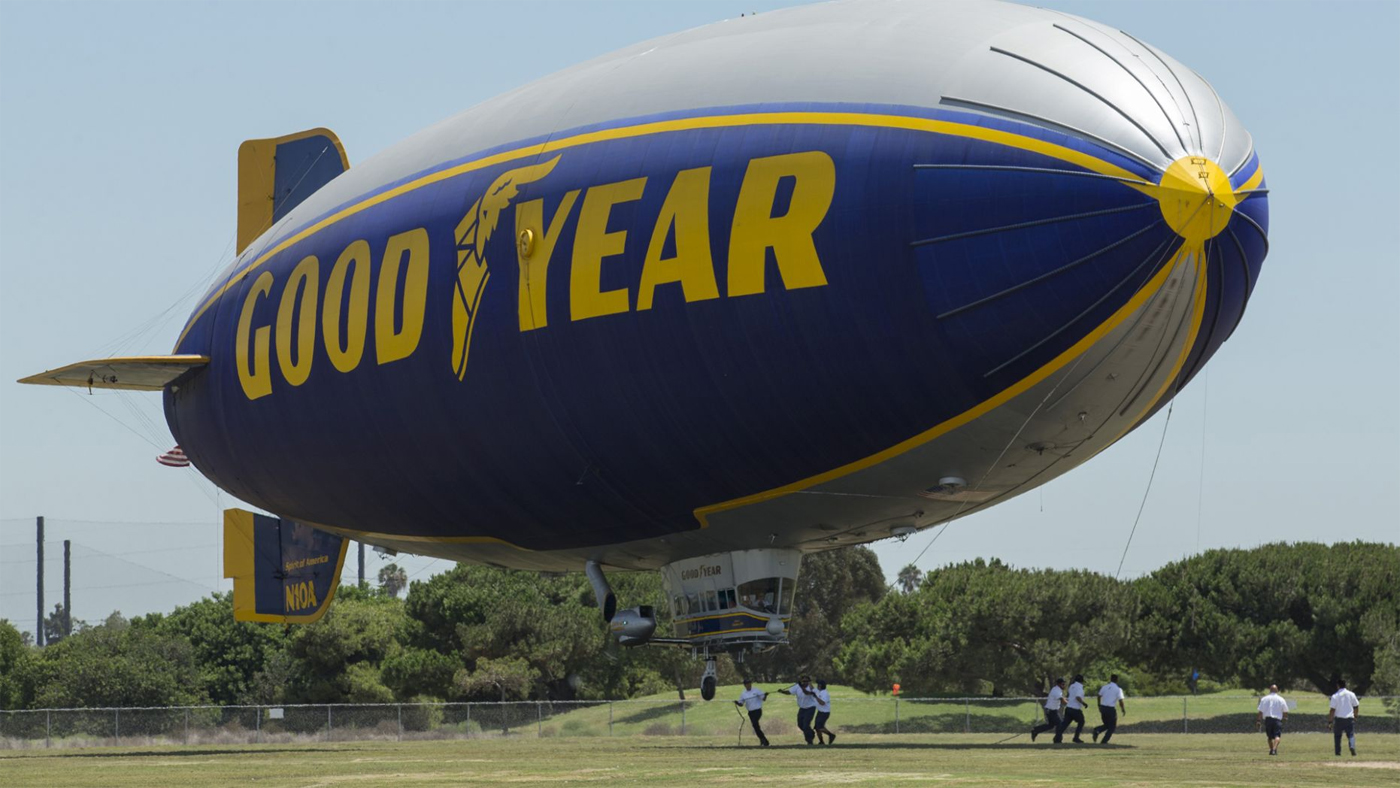 Goodyear is one of the few airship companies today. Used to advertise companies in American football matches
Goodyear is one of the few airship companies today. Used to advertise companies in American football matchesOf course, airships are not perfect. They are slower than helicopters and airplanes (albeit faster than cargo ships). And their enormous size makes them vulnerable to strong winds and other adverse weather events. Well, the stigma from one of the most spectacular disasters of the 20th century, the Hindenburg fire, still remains. People may not accept the huge balloons flying in the sky above them with great hospitality.
Amazon airships are needed for megacities. China - for the development of territories. And someone needs them for the soul. In April 2017, it became known that Google co-founder Sergey Brin was also engaged in the development of airships. Work is underway in the second hangar of the NASA Ames Research Center in California.
Brin's project is non-profit. In the future, its airships (length about 200 meters, carrying capacity up to 80 tons) will be used in humanitarian operations, in particular, in the delivery of medicines and food to the most remote and inaccessible regions. All work on the design of the airship is carried out exclusively at the expense of Brin himself. According to preliminary estimates, the design and construction of such an aircraft will cost the IT magnate $ 100-150 million.
And how are you, ready for the arrival of airships, or is it better in the old fashioned way, like us, by airplanes?
PS By mail.com it favorably delivers parcels to you from any online stores in the USA. To Russia - from $ 12 (and for 4-8 days!), To Ukraine - from $ 8 (to any branch of Novaya Poshta). Parcels are insured, storage in the USA for up to 70 days is free of charge. Readers of Habr 7% discount on delivery after registration with the HABR code. And free redemption of goods from stores (“Full Escort”) using the same code.
